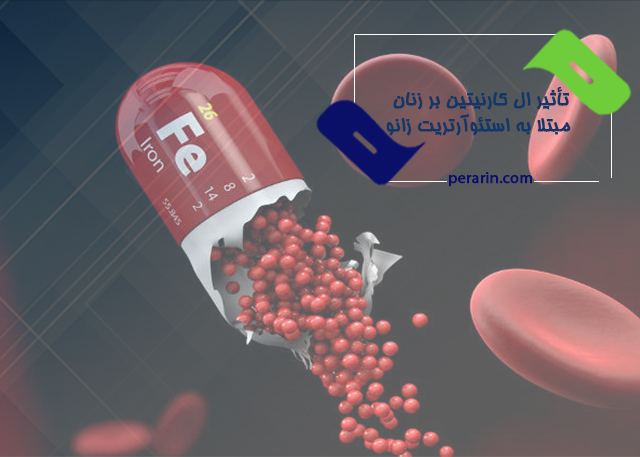
The relationship between body iron stores and atherosclerosis
by Website Writer | آبان 7, 1402 | Articles
The Relationship Between Body Iron Stores and Atherosclerosis
Ischemic myocardial diseases are now considered the leading cause of mortality in various industrial and developing societies.
The most important and common etiology is the phenomenon of atherosclerosis, which occurs naturally to varying degrees in all individuals. In certain groups, atherosclerosis progresses more rapidly and extensively, leading to serious pathogenesis. This can result in myocardial ischemia and related events, even at young ages.
Factors That Aggravate Myocardial Ischemia
Several factors contribute to the progression of ischemic heart disease, including:
- Hypertension
- Diabetes
- Smoking
- Hyperlipidemia
These factors are well-established and are considered significant risk factors for cardiovascular diseases.
Preventive Factors
To study preventive measures, we examined:
- Serum homocysteine levels
- Serum fibrinogen levels
- Body iron stores
Preliminary investigations suggest that increased iron stores may contribute to the development of atherosclerosis. One theory proposes that the lower incidence of atherosclerosis in women during their reproductive years may be due to iron loss from menstrual bleeding. Consequently, postmenopausal iron accumulation may elevate atherosclerosis risk.
Research Methodology
This study included 80 randomly selected patients admitted to the cardiology unit due to acute coronary syndrome (myocardial infarction or unstable angina).
A questionnaire was prepared to collect patient data, including:
- Age and gender
- History of ischemic heart disease and blood disorders
- Hypertension and diabetes history
- Previous blood transfusions
- Smoking habits
- Iron supplement usage
All participants underwent laboratory tests for:
- Blood glucose
- Triglycerides and cholesterol
- Hematocrit and hemoglobin
- Serum ferritin and iron levels
- Transferrin saturation percentage (analyzed separately for males and females)
What Are Risk Factors?
Cardiovascular diseases remain the leading cause of death worldwide. Risk factors—epidemiological findings that increase disease probability—are categorized as:
- Behavioral (e.g., smoking)
- Genetic (e.g., family history)
- Laboratory findings (e.g., high cholesterol)
- Pre-existing conditions (e.g., diabetes or hypertension)
Despite recent medical advancements, coronary artery disease remains a significant health concern in the 21st century. Therefore, identifying and controlling risk factors is crucial.
Factors That Accelerate Atherosclerosis
Well-established contributors to atherosclerosis progression include:
- Hyperlipidemia
- Smoking
- Hypertension
- Insulin resistance and diabetes
- Obesity and physical inactivity
- Psychological stress
- Menopause in women
Recent research has also explored the role of homocysteine, fibrinogen, lipoprotein(a), inflammatory factors, and infections in atherosclerosis development.
The Link Between Serum Iron Levels and Coronary Atherosclerotic Events
Scattered studies suggest a potential association between serum iron levels and coronary atherosclerotic incidents. Individuals with excessively high or low iron levels may experience negative cardiovascular effects.
Iron-deficiency anemia is one of the oldest known human diseases. However, the adverse effects of iron overload have gained increasing attention in recent years, primarily due to greater blood transfusion usage and increased life expectancy.
Iron Overload (Overload Iron and Cardiovascular Risk)
Iron overload (Overload Iron) can lead to various complications, with heart failure being the most fatal consequence. The toxic effects of excess iron appear in different heart cell components, starting with iron deposition in cardiac muscle cells, which is the first step of iron-induced cardiac damage.
Another harmful effect of iron overload is the production of hydroxyl radicals, which damage heart cells. Iron overload significantly increases hydroxyl radical levels, exacerbating oxidative stress and cellular damage.
Diseases Caused by Iron Overload
Severe iron accumulation can result in clinical conditions such as:
- Restrictive cardiomyopathy
- Pericarditis
- Angina, even with normal coronary arteries
- Conduction disorders and various arrhythmias
In recent years, hematocrit levels have been recognized as a coronary artery disease risk factor. Laboratory studies suggest that hemoglobin can limit nitric oxide activity in the blood, impacting vascular function.
Conclusion
This study, along with previous similar research, suggests that minor fluctuations in iron levels within the normal range do not significantly impact atherosclerosis progression. However, long-term and substantial iron imbalances may play a role in accelerating atherosclerosis.
Reference
Khosravi, A., Hassanzadeh Delouei, M., & Habibi Mod, F. (2005). The relationship between body iron stores and atherosclerosis. Ofogh-e-Danesh, 11(3), 27-31. SID.
